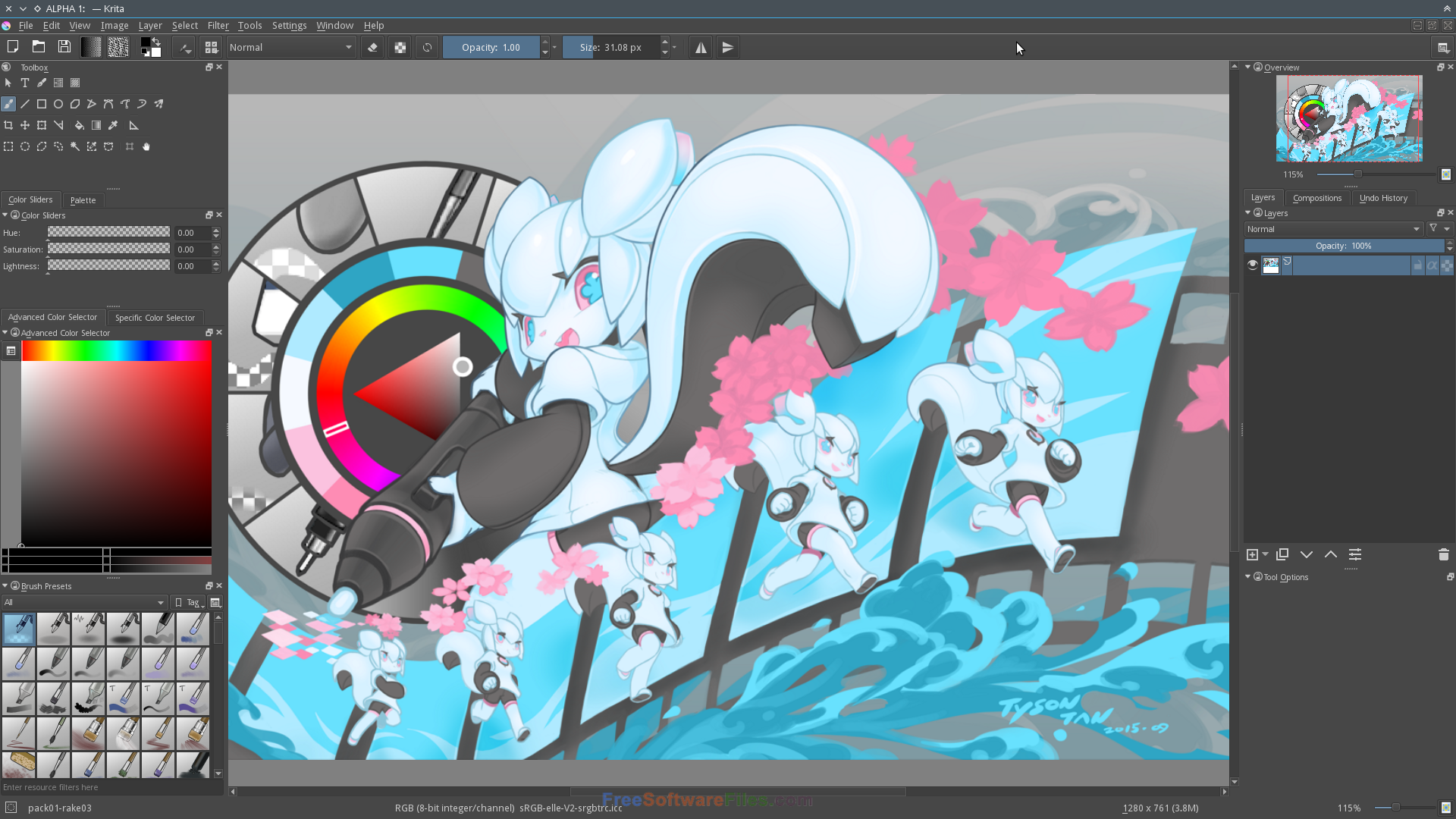


Speaking of free, I installed Ubuntu Linux on an old machine a few days ago, and it works great.
ANIMATION TUTORIAL KRITA FREE
Definitely not quite as nice as TVPaint for 2D animation, but still some really impressive stuff possible, and I love the fact that it’s open source and free (as I detest the monthly subscription model now in use, especially by Adobe). I’m too far gone to spend time re-learning a new app, but might give it a go if I was 25 years younger.
ANIMATION TUTORIAL KRITA SOFTWARE
Originally written by Saisho Kazuki, Japanese professional animator, and translated by Tokiedian, KDE contributor.Really nice overview / review of the free animation software ‘ GREASEPAINT/BLENDER‘ by Toniko Pantoja. So you can decrease its resolution according to your need. However, if you stick to digital, 150-120 dpi is enough to make animation. I made this template in 300 dpi because we have to print them to use them in traditional works which still fill an important role in Japanese Anime Studio. If you doĬolors in other software, I recommend to export frames as. If you do the colors in Krita, please use Coloring group layer. Once the vector functionality of Krita becomes better, I recommend you to use vector to finalize inbetweening. This is its correspondence with Time sheet. If you feel Krita is becoming slow, I recommend you to merge key drafts and keys, as well as to remove any unnecessary layers.Īfter finalizing keys and cleaning up unnecessary layers, add inbetweens, using Time sheet and inbetween drafts as reference. However, probably you have to increase or decrease these layers according to your work.įinished keys, you will begin to draw the inbetweens. “Black” layer is to draw main line art which are used ordinary line art, “Red” layer is to draw red auxiliary line art which are used to specify highlights, “Blue” layer is to draw blue auxiliary line art which are used to specify shadows, and “Shadow” layer is to draw light green auxiliary line art which are used to specify darker shadows. This is correspondence between Timeline and Time sheet.
ANIMATION TUTORIAL KRITA FULL
This is due difference between 24 drawing per second, which is used in Full Animation, and 12 drawing per second and 8 drawings per second, which are used in Limited Animation, on the Timeline docker. You can add layers and add them to timeline. Key draft –> assign them into Time sheet (or adjust them on Timeline, then assign them into Time sheet) –> adjust them on Timeline –> add frames to draw drafts for inbetweening if you need them –> Start drawing Keys This contains colors used to draw main and auxiliary line art and fill highlight or shadows.

This contains a time sheet and composition sheet. Where you fill areas with colors according to specification of inbetweens. Where you add inbetweens to keys for the process of coloring, and remove unnecessary details to finalize keys (To be accurate, I finish finalization of keys before beginning to add inbetweens). Where you add some details to the layouts and arrange them to draw “keys” of animation. These layers are used to draw layouts digitally. If you don’t use them, you can remove them. These layers will contain background scenery or layouts which are scanned from a traditional drawing. Anime tap holes are prepared on separate layers in case you have to print it out and continue your drawing traditionally. To higher layers, except for coloring layers. Layers are organized so that your work will start from lower layers go Its things like layer folders according to scale and details of your On the assumption that it was used in co-production, so please customize This template is used to make Japanese-style animation.


 0 kommentar(er)
0 kommentar(er)
